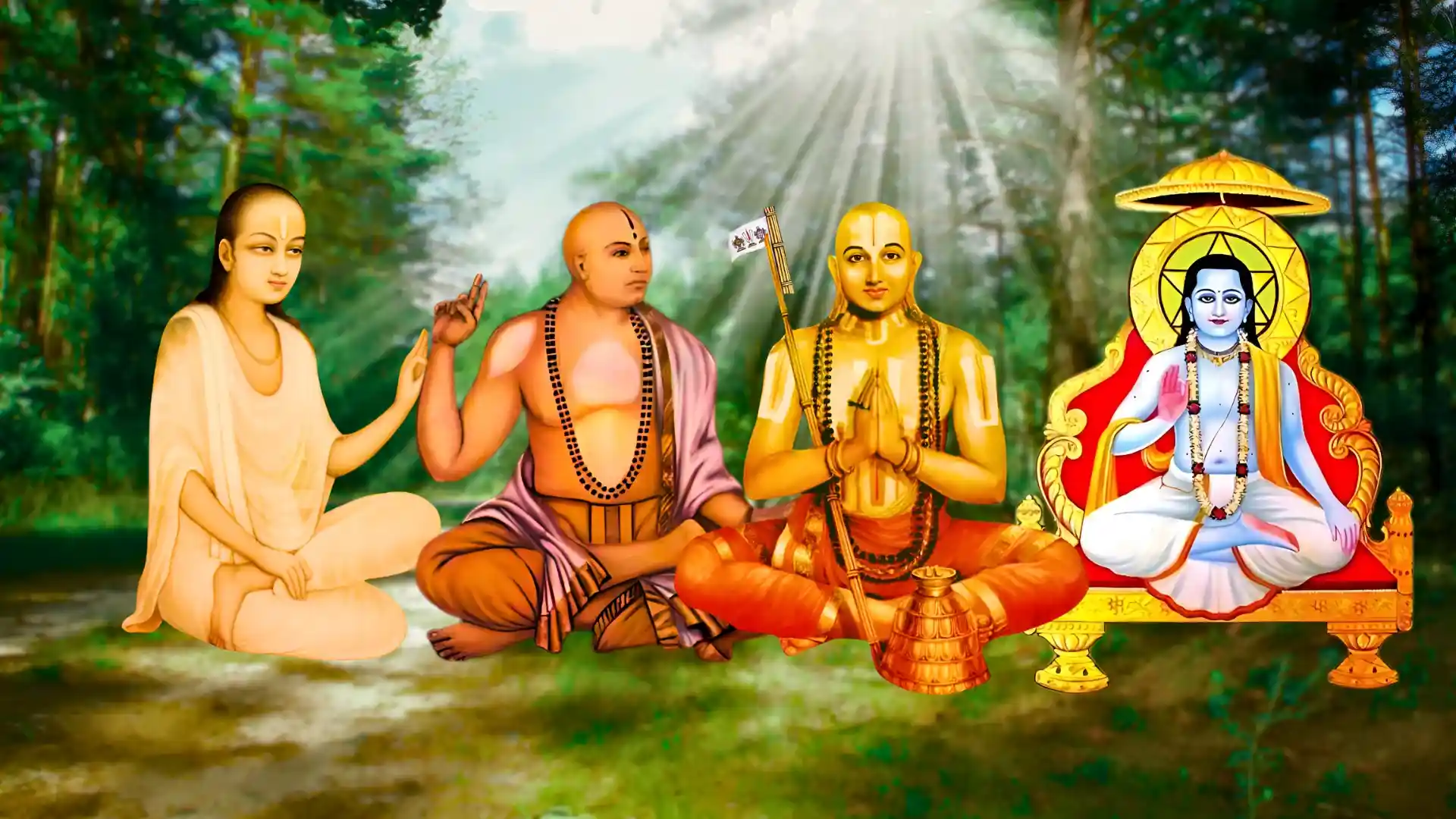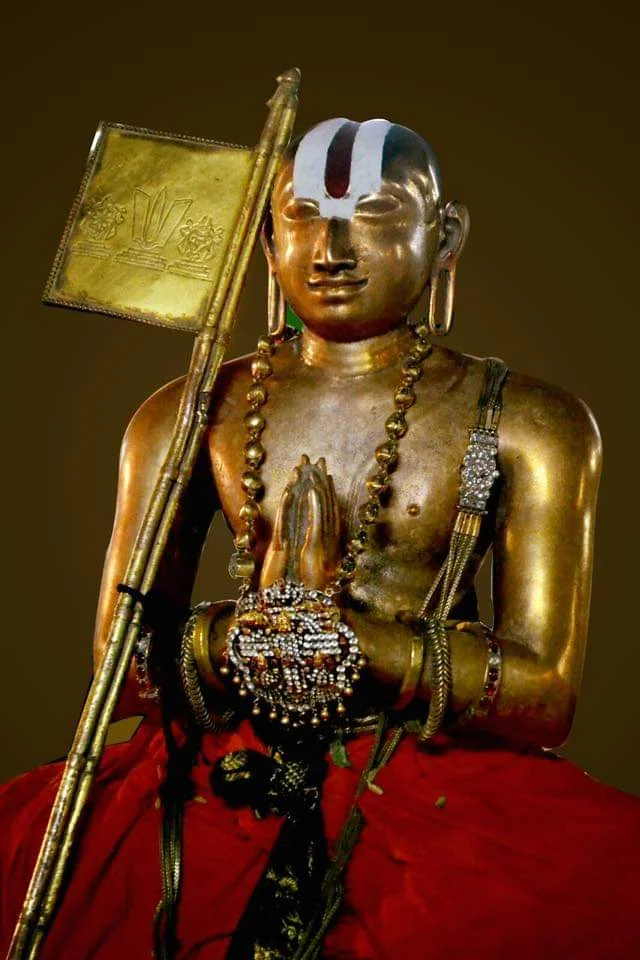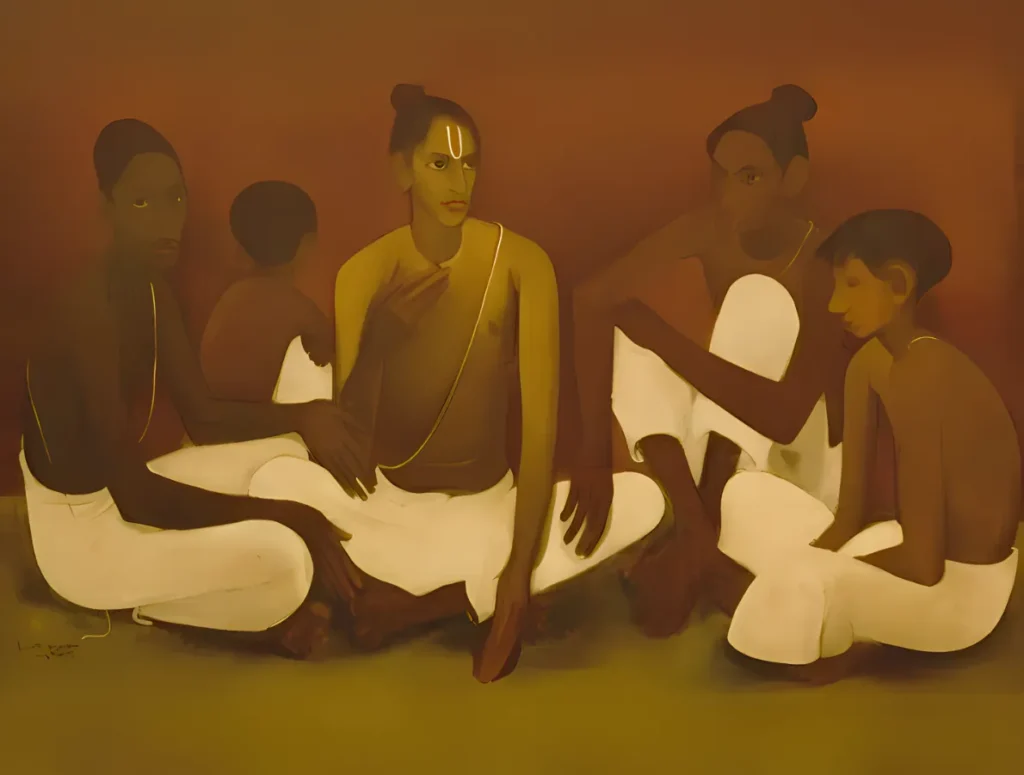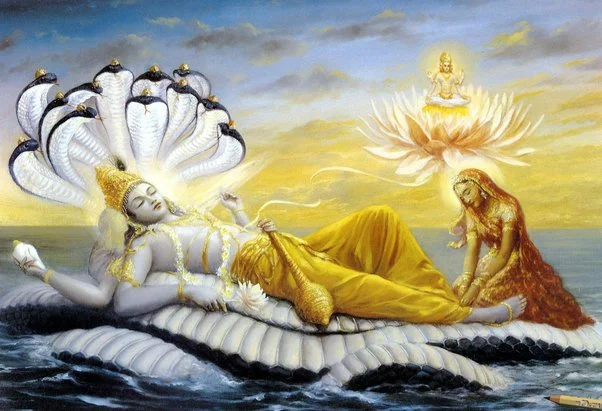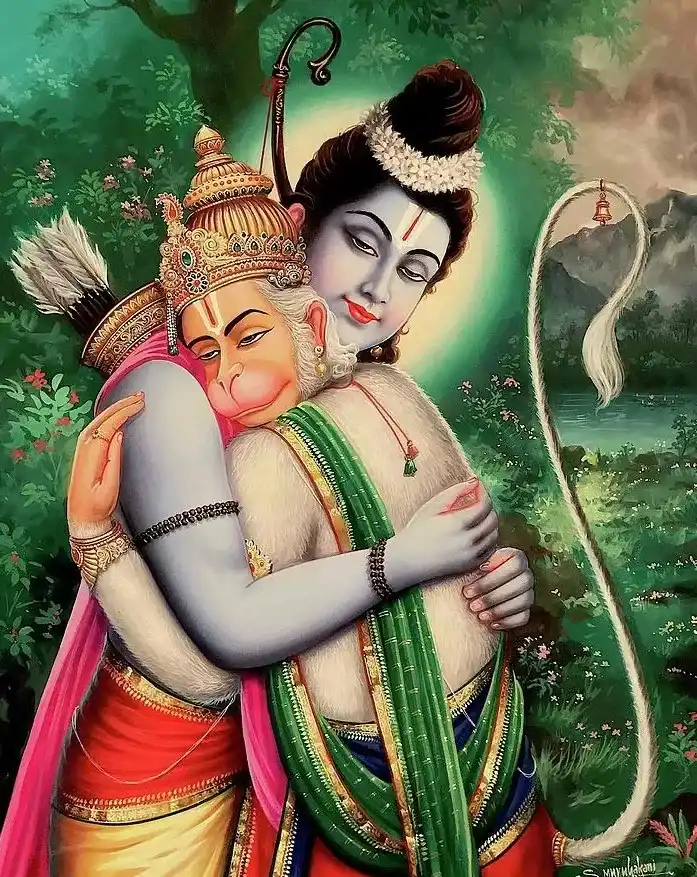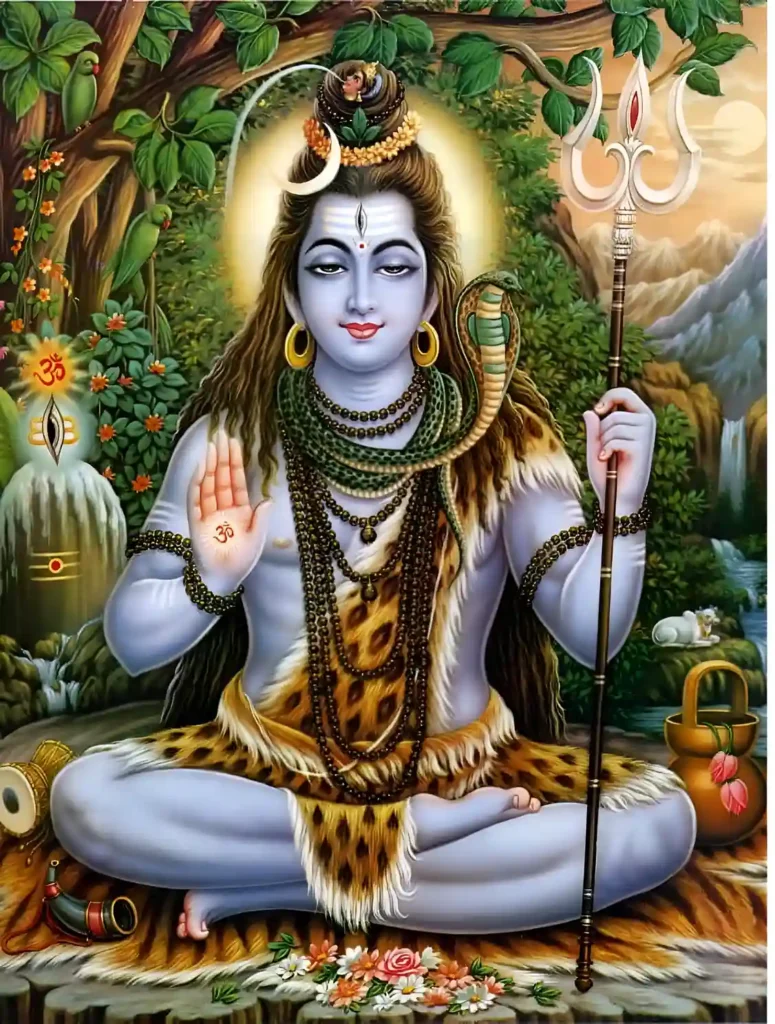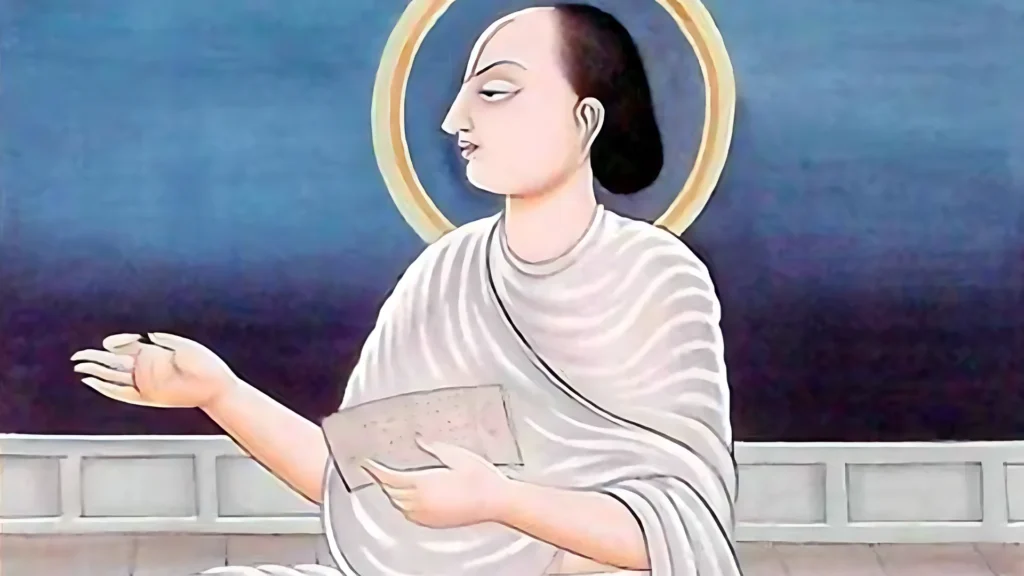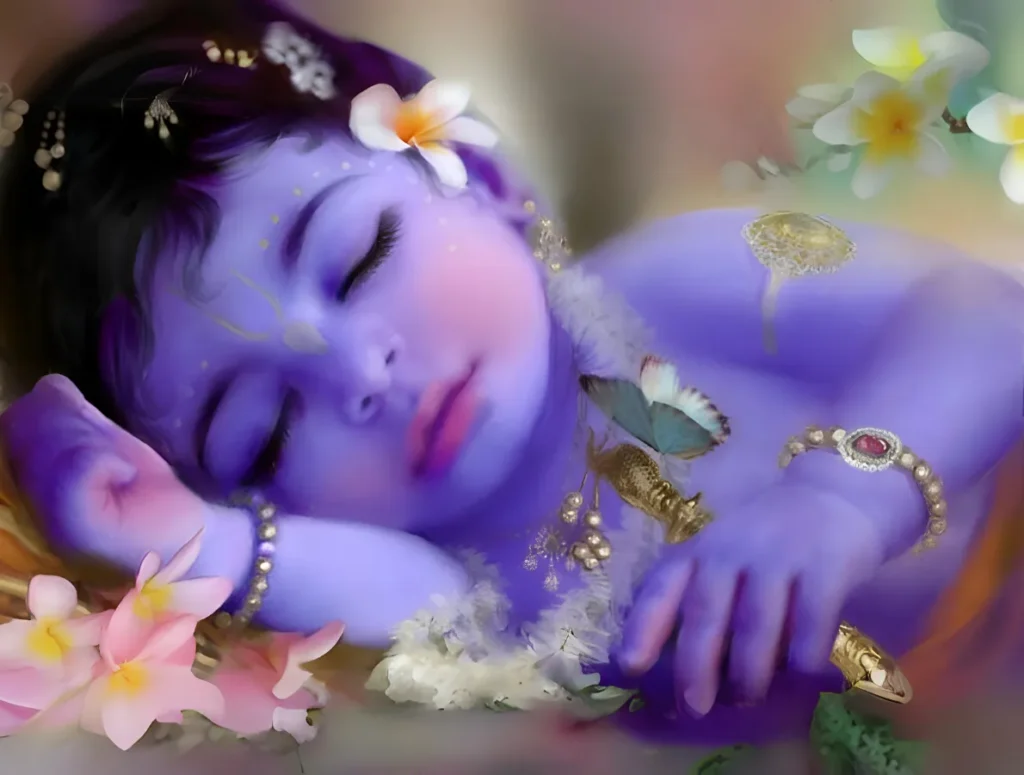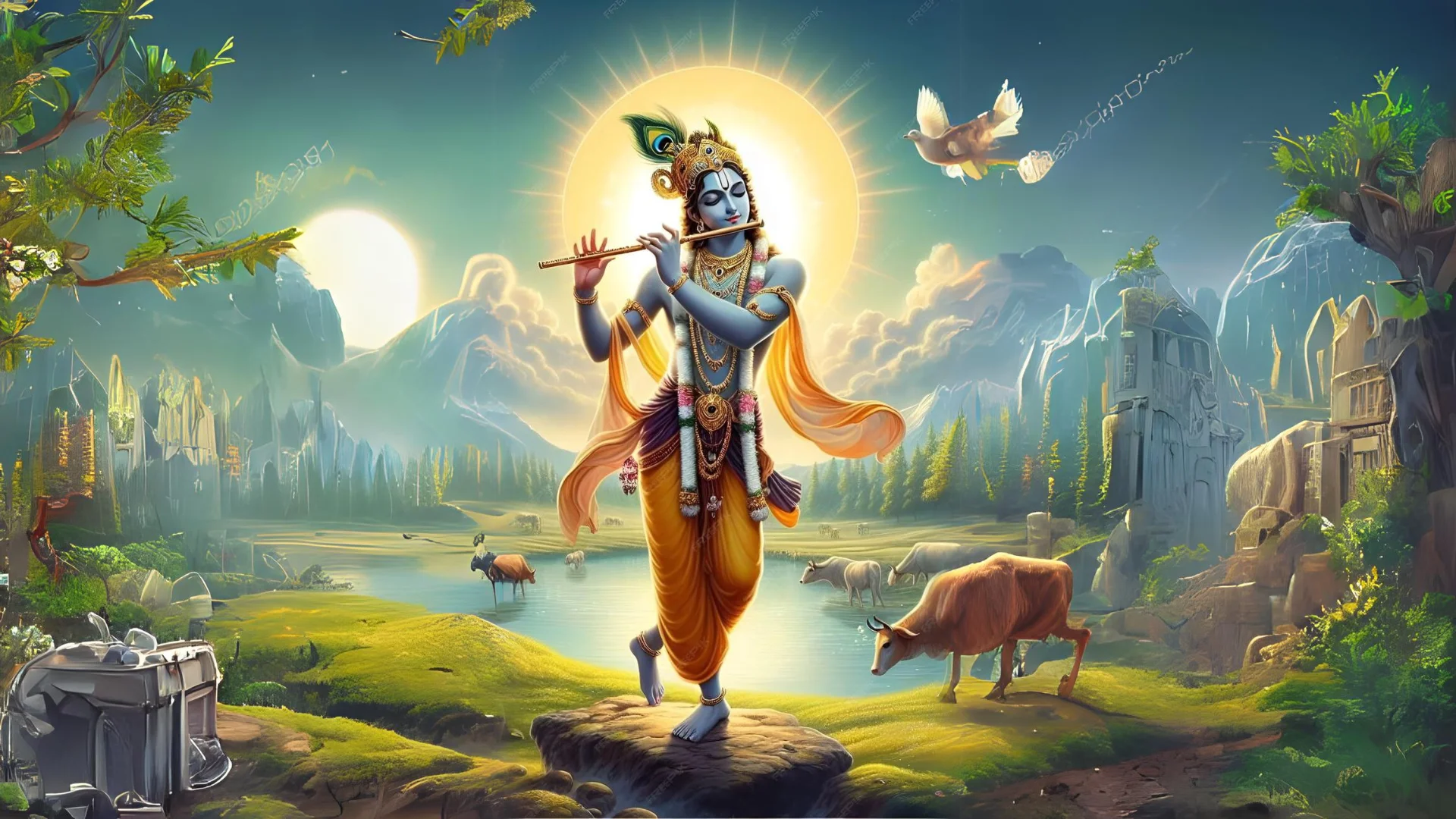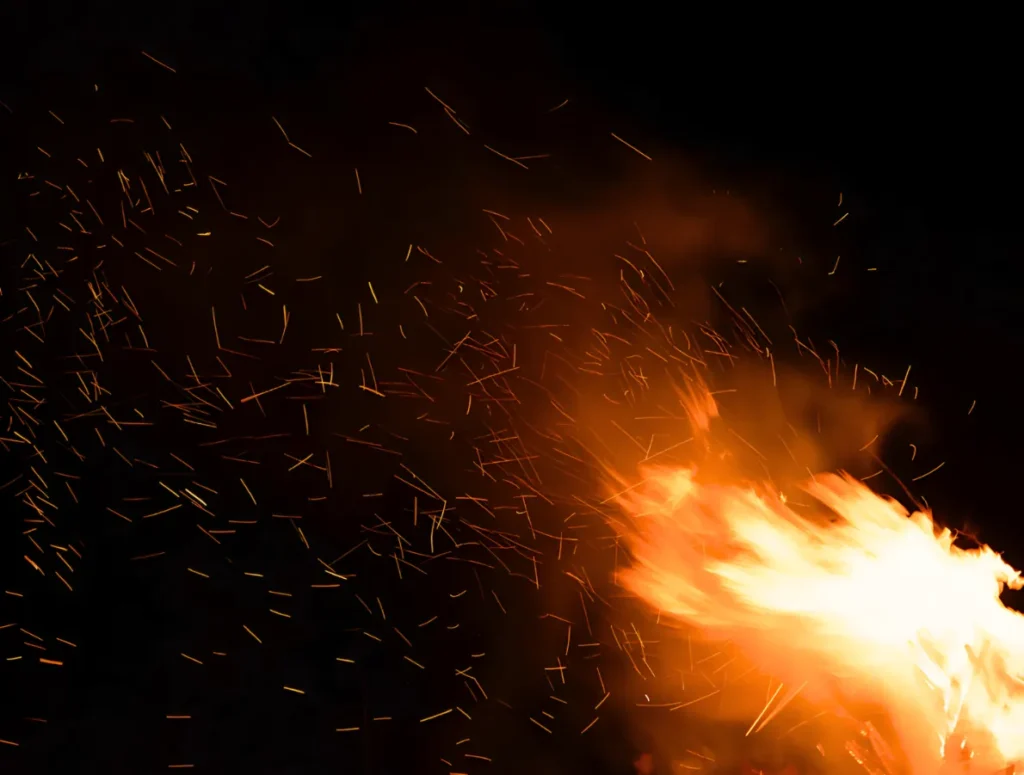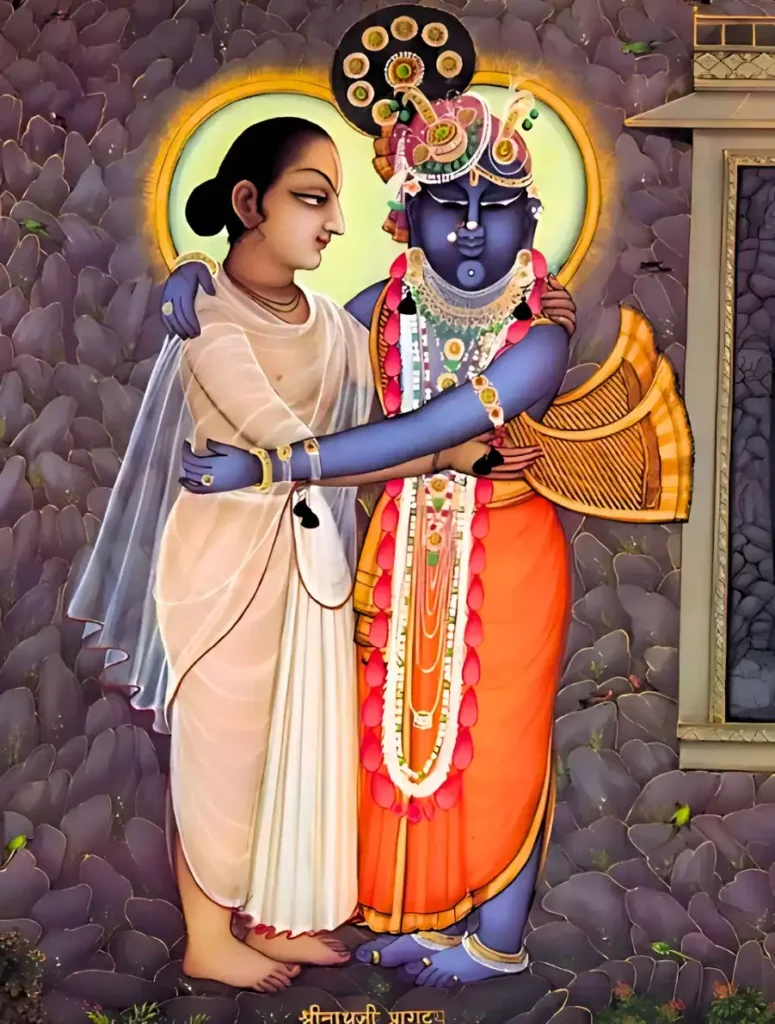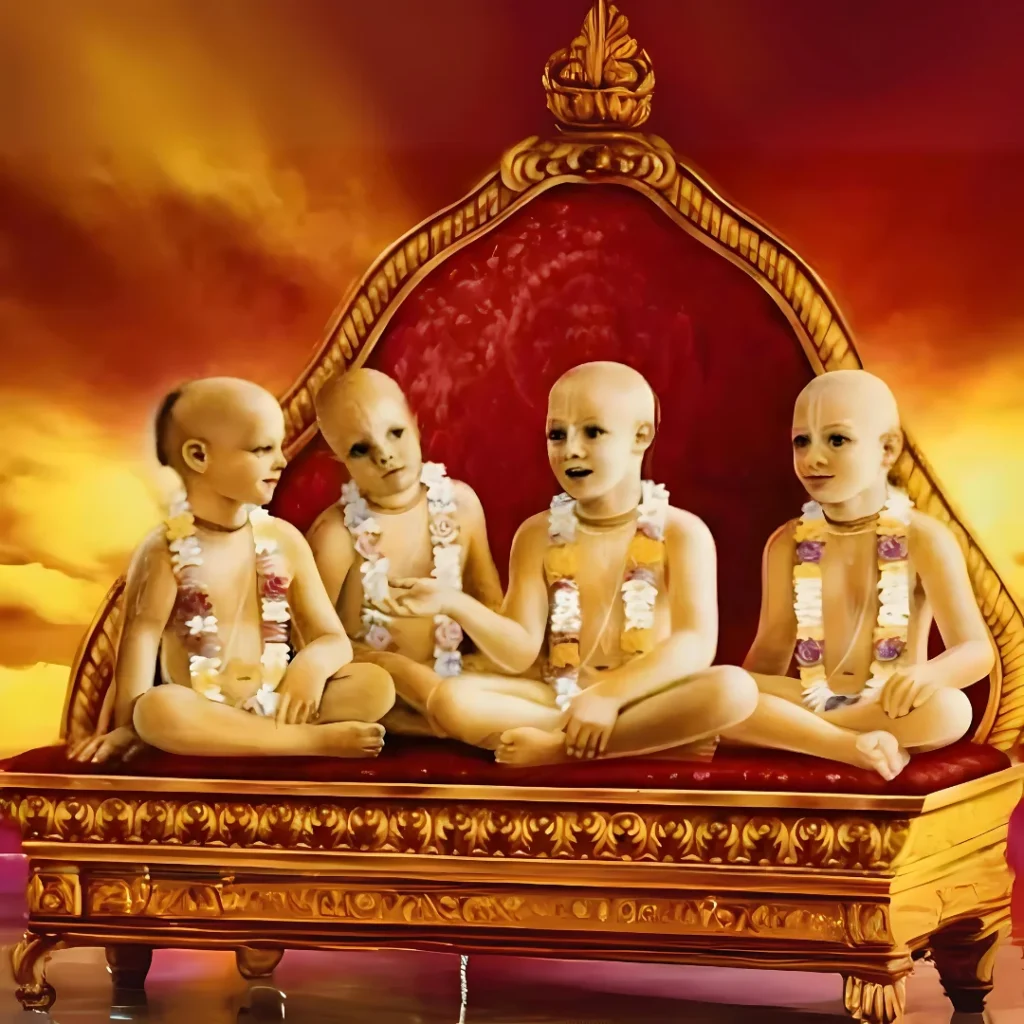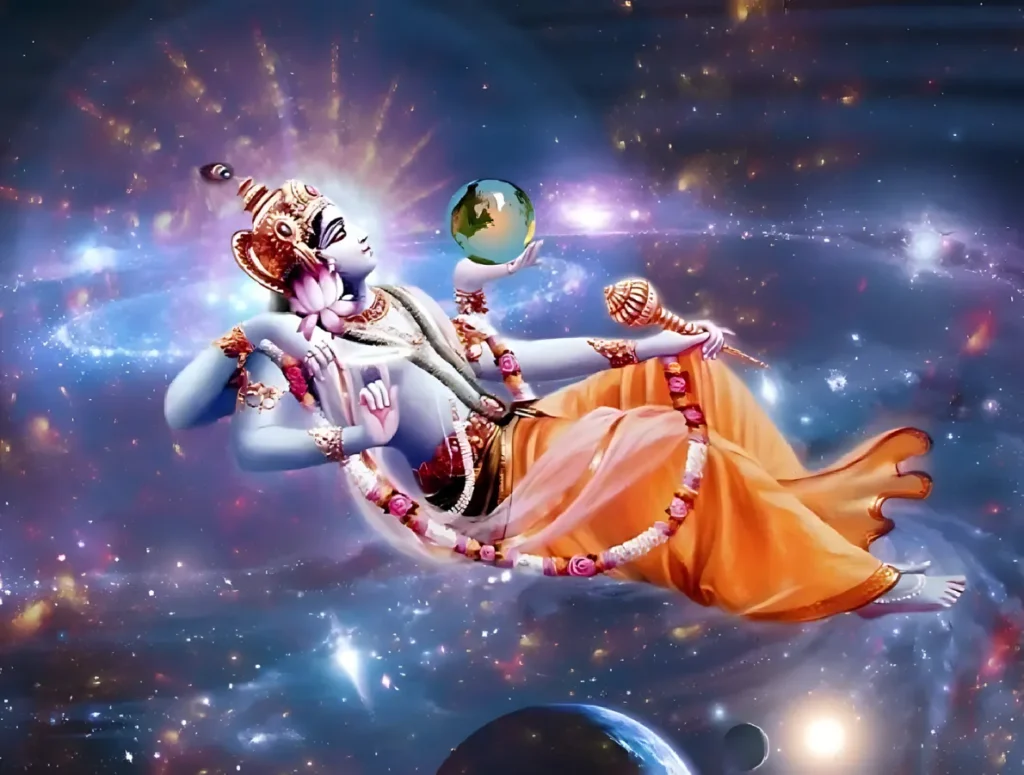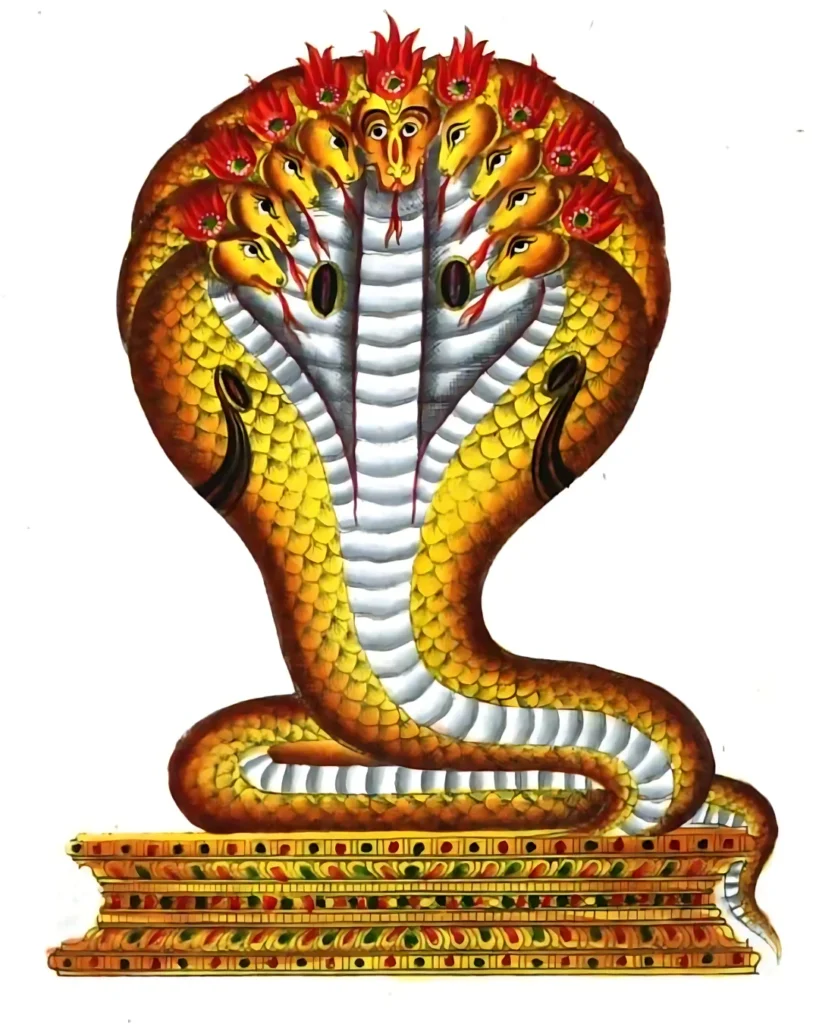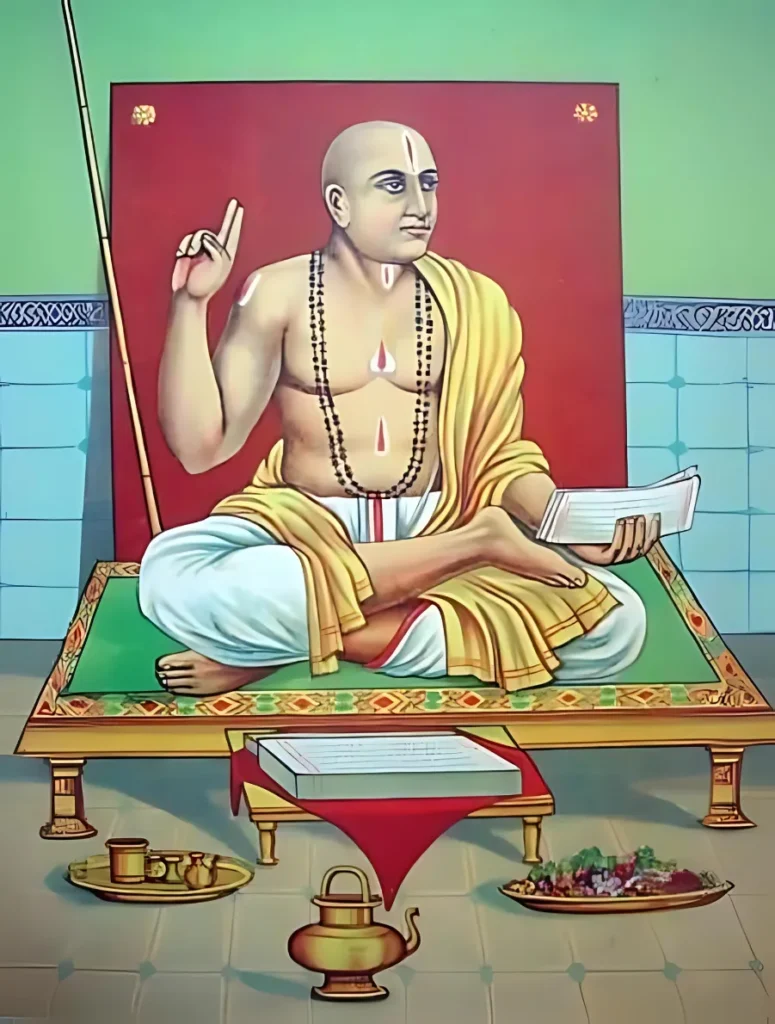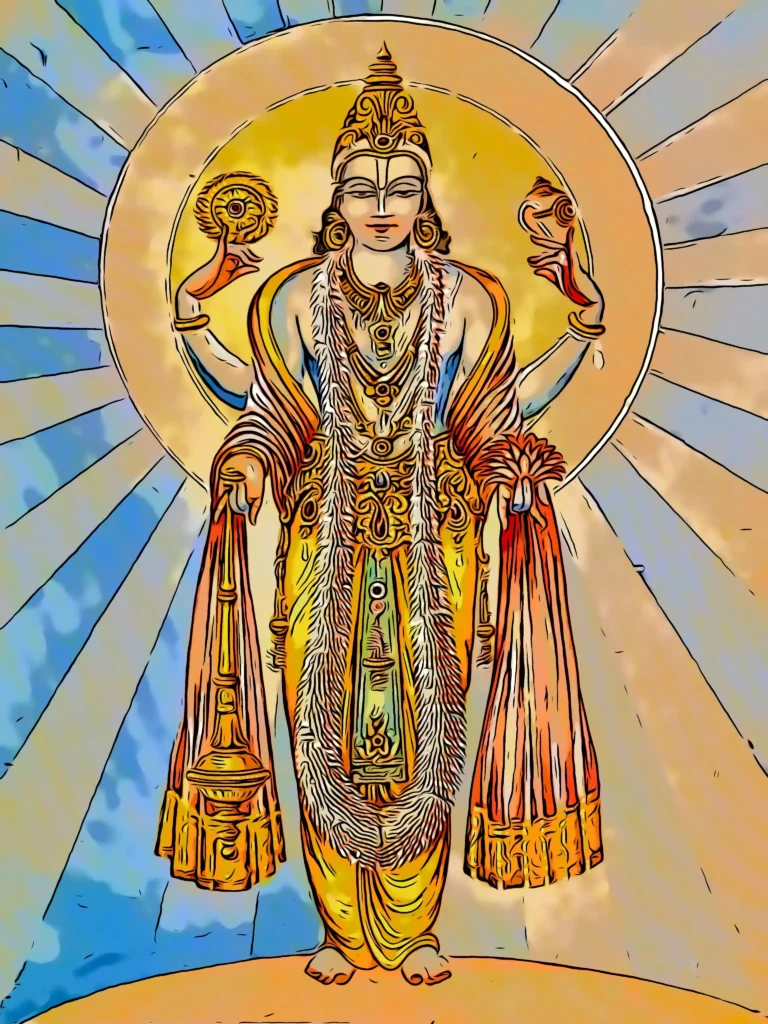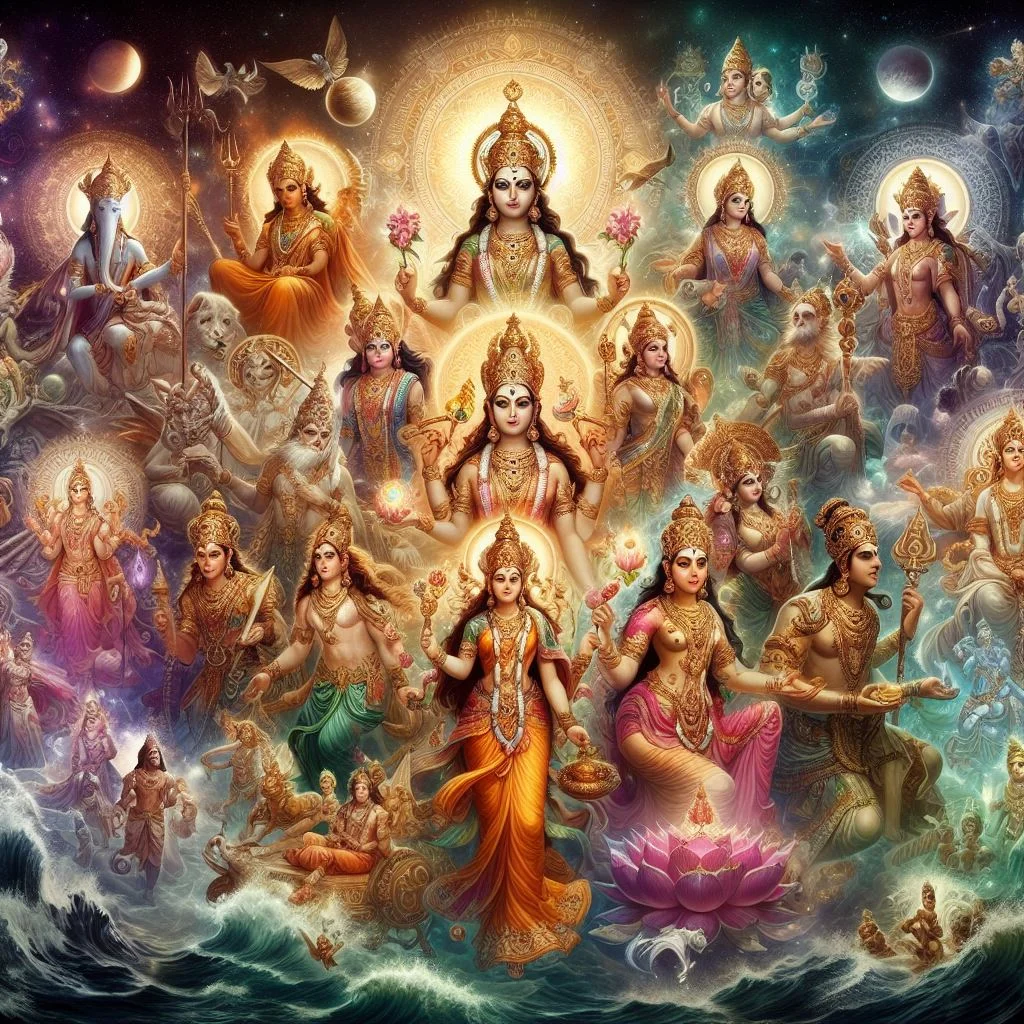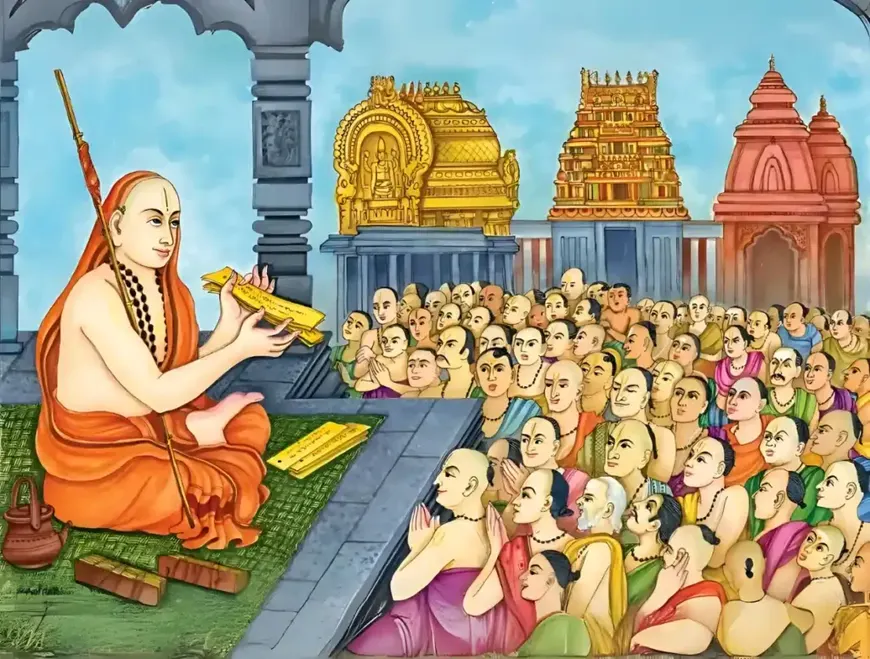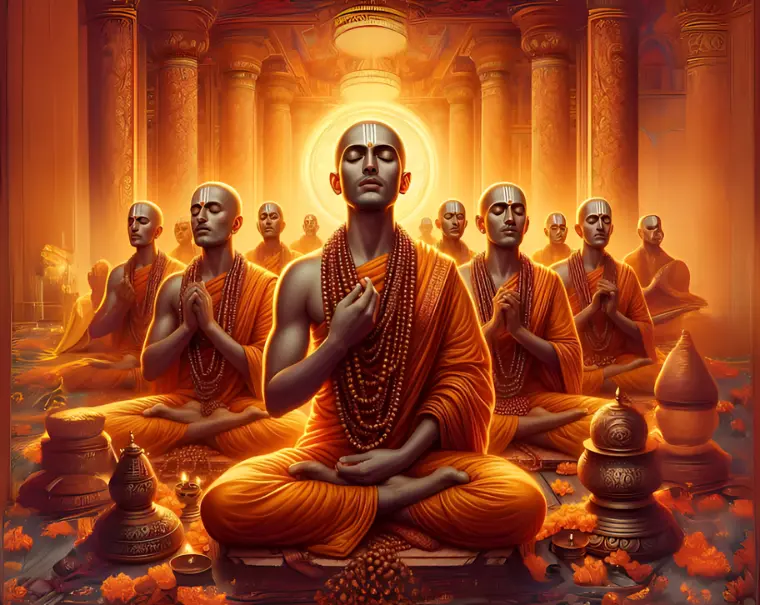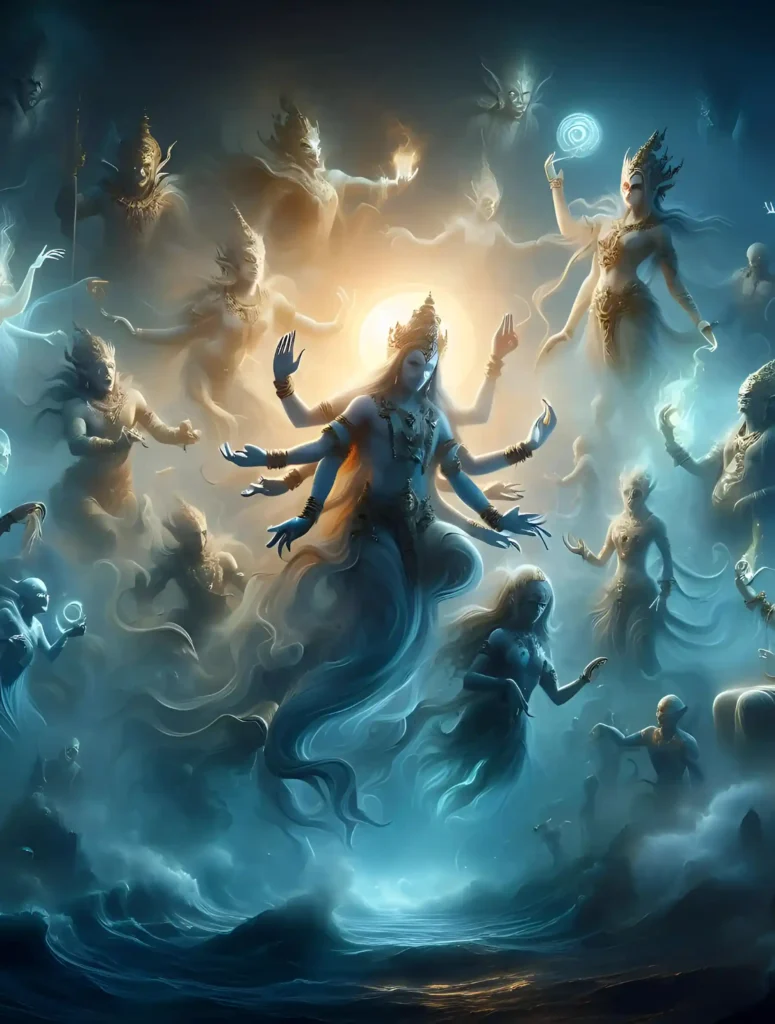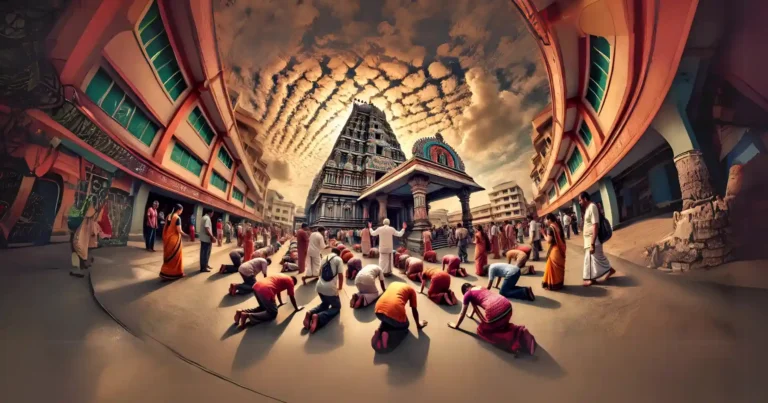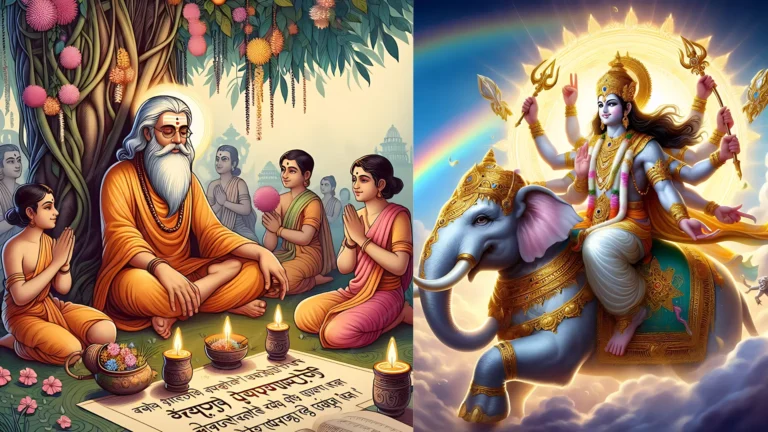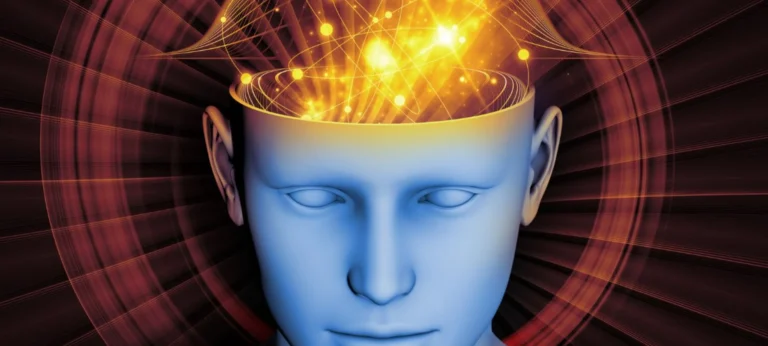Table of Contents
Introduction
Vaishnavas are devotees of Lord Vishnu. They exclusively worship Lord Vishnu and His various incarnations known as Avatars. There are 4 main Sampradayas or sects prevalent among the Vaishnavas namely the Sri Sampradaya, Rudra Sampradaya, Nimbarka Sampradaya (Hansa Sampradaya) and finally, the Madhwa Sampradaya (Shesha Sampradaya). Let us discuss the history and philosophies of each of these Sampradaya in a bit of detail.
The 4 Major Vaishnava Sampradayas: Sri Sampradaya
Lakshmi Devi, the eternal consort of Sri Vishnu, is the Adi Guru of the Sri Vaishnava Sampradaya. The Sri Sampradya has 2 main divisions.
1) Ramanuja Sampradaya
Sri Ramanujacharya, the incarnation of Lord Lakshmana himself founded the Ramanuja Sampradaya. He chiefly propagated the philosophy of Vishishtadvaita, which combines both the Advaita and Dwaita perspectives of Sri Adi Shankara and Sri Madhwa.
The major highlights of the Ramanuja Sampradaya are:
The 3 Distinct Realities
Achitt (non-living objects), Chitta (living souls) and Ishwar (Supreme Being) are the three distinct realities as classified by Sri Ramanujacharya. Each differs in their degree of awareness from Achit to being utterly inert to Ishwar being all conscious. They are all equally real and not an illusion.
Dependance on Ishwara
The individual soul (Chitta) and Matter (Achitta) cannot exist without that Supreme cause, (Brahman), just as the body cannot exist without the soul. Sri Ramanuja uses the term ‘Shukla Patta’ to explain our dependence on God. Shukla Patta (ஷுக்லா பட்ட)means White Silk, usually used in reference of the Dhoti, or the lower garment of a typical Brahmin , Vedic Male member.
Just as the colour white and the Dhoti are different, yet they cannot be separated from each other, similarly, Chit and Achitt being distinct from Bhagavwan, cannot break away from Him.
Jeeva and Brahman are two separate entities as love can bloom only between two distinct individuals. However, Jeeva and Jagat are always dependent on Bhagavan.
Sharira-Shariri Bhav
Both Inert and Conscious Beings (i.e) Achitta and Chitta form the Body of Bhagavan. Bhagavan is the soul of this macro organic structure comprising living and non-living entities. Thus Jeeva and Bhagavan share a body-soul relationship also known as Sharira-Shariri Bhav. We are His body, while He is our soul.
Inculcating Seva Bhav
Hence, many Sri Vaishnavas engage in social service activities, like anadanams(அன்ன தானம், अन्न सेवा दान) and opening medical hospitals, for they believe that through their actions, they are serving the various limbs of Bhagawan. This is not just a belief, based on a non-scientific approach but a deep truthful realization of the sages who have descended for the sake of the fallen beings of that Parampara system.
English being a limited language cannot elaborate more on the word “belief” in the True Sense. It is beyond belief or faith. It is typically known as Anugraha Daanam (अनुग्रह दानम्, அனுகிரக தானம்) which is service to mankind, after suspension of all faculties of judgement, based out of Guru Seva and Vigraha Seva. This type of genuine social service can commence only after genuine compassion is attained by the Grace of the Guru, never otherwise.
Just as the body serves the soul, we, the Lord’s Body, should serve our soul Lord Vishnu. Therein lies our purpose of life and supreme happiness. We are Lord Narayana’s eternal servants. Hence, Sharanagati (surrender). towards the Supreme Being is the highest means for salvation.
The Sri Vaishnava Sampradaya lays down rules for ritualistic worship towards Lord Narayana, giving a personal form to the non-personal Brahman. Sri Vishnu is the Supreme Deity towards whom the jeeva should render devotional service.
2) Ramananda Sampradaya
This Sampradaya was initiated by Sri Ramanandacharya, the very incarnation of Lord Rama. The teachings of this Sampradaya are similar to Ramanujacharya, however they have some minute differences.
Ramanandis (followers of the Ramananda Sampradaya) worship the two handed Lord Rama while the followers of Ramanuja Sampradaya bow before Lord Vishnu. Yet both of the Sampradayas consider Sri Rama, Sri Krishna and Lord Vishnu as the Supreme Personalities, since They are all the same tattva or the Supreme Principle.
The followers of Ramananda Sampradaya have shown a great inclination towards Lord Shiva as they state that neither Lord Rama nor Lord Shiva can be without each other. The Ramanuja Sampradaya, at most places, does not show that much inclination towards Lord Shiva.
Now, let us look at the next Vaishnava Sampradaya.
The 4 Major Vaishnava Sampradayas: 2) Rudra Sampradaya
Lord Rudra or Shiva is the Adi guru of the Rudra Sampradaya, who passed on this divine knowledge given to him by Lord Vishnu.
Vishnu Swami, a saint of the thirteenth century founded the Rudra Sampradaya. But, there is not much information about his life. The Rudra Sampradaya was divided into two branches. One branch purely follows the teachings of Vishnu Swami, but this sect has gone into obscurity and is not very popular today.
The other division of devotees worship Shrinathji, through the path of Pushtimarg.
What is Pushtimarga?
Pushitmarg is yet another sect within the Rudra Sampradaya, founded by Sriman Vallabhacharya. Sri Vallabhacharya, a sage from the state of Andhra Pradesh was singularly responsible in spreading this sect in Gujarat, Uttar Pradesh and other northern states. Many consider Sri Vallabhacharya as the incarnation of Agni Deva, the fire god. The Pushtimarg is a very popular Sampradaya among the masses of northern India.
Shuddhadvaita: Key Philosophy of Pushtimarg
Pushtimarg propagates the philosophy of Shuddhadvaita which says that Ishwara is both the creator and his creation. Brahman desired to become many, so he made himself manifest through the variegated forms of living and non-living objects. Just as attributes are identical to a substance, and cause is identical to effect, Brahman is identical with the universe. However, his existence does not depend on this ever changing universe. He remains unchanged despite the changes happening in the world.
Role of Lord Krishna
Lord Krishna is the supreme Antaryami or inner guide. Antaryami is the Sanskrit word for inner guide and witness, also known as Paramatma. Sri Krishna is the Supreme Paramatma, the embodiment of Sat Chit and Ananda. Existence, consciousness and bliss, in full.
7/8 Questions from Sanatana Dharma
The scores generated in this Quiz may or may not be absolute. There may be right or wrong answers to each Question. A percentage towards 100 indicates that you are more aligned to the overall subject matter.
From His Sat attribute, or existential principle, sprang the inanimate or lifeless objects called Jagat. They simply exist and do not possess consciousness and bliss. From Chitta, or consciousness appeared the living beings or Jeeva. Jeevas have both Sat and Chit but have the Ananda or bliss quotient shrouded. Finally, from Ananda, appear countless Antaryamis or inner witnesses who occupied the hearts of the living souls.
They reside within each living soul as the inner witness and guide. These Antaryamis have all the three attributes Satt, Chit and Ananda present in them. All the three forms Jeeva, Jagat and Ishwara are identical to Bhagavan.
Non-living objects (Jagat) are Vijaatiya dissimilar from God since these have only Sat in common. Living entities (Jeeva) are Sajaatiya, meaning they are similar to Bhagawan in their attributes. Antaryamins are Svagata or they reside inside the Lord. The goal of human life is to engage in loving service towards Sri Krishna. Bhakti is the only means to attain Him.
Difference between Samsara and Jagat
In Pushtimarg, the terms Jagat and Samsara have different meanings. Jagat refers to the gross universe which appears and merges into the Lord at the time of creation and dissolution. Jagat is real. Samsara on the other hand refers to the cyclic bondage of birth and death engendered by ignorance. Samsara is unreal and needs to dissolve by the power of Sadhana.
Are Jeeva and Brahman Identical?
Jeeva and Brahma are non-different in their essence. Just as sparks spring from fire and cotton separates into threads, Jeeva and Jagat have appeared from Sri Krishna, their source. We are all the Lord’s varied manifestations.
Unlike Advaita Vedanta, Shuddhadvaita gives a personal form to Brahman where devotees can render loving service to their chief deity Sri Krishna.
Teachings of Pushtimarg
One need not suppress material desires to attain the Lord. Rather, one should direct one’s desires towards Sri Krishna, for He can accept us in all relationships.
Also, it is not necessary to be a Sanyasi or renounce the world to attain that Supreme State. Being a householder one can serve him and reach the same destination.
The Pushtimarg lays great emphasis on Bhakti or unalloyed devotion towards Sri Krishna. For the followers of Pushtimaga, Mukti or merging in the supreme light is not the ultimate aim of life, Instead the goal of life is to serve the eternal couple Radha Krishna in their transcendental abode of Goloka Vrindavan.
The devotees strive to develop Prema (love) towards Sri Krishna, which is the fundamental teaching of Pushti Marga. One should serve Thakurji selflessly, without any desire for material pleasures.
The 4 Major Vaishnava Sampradayas: 3) Hansa Sampradaya
This Sampradaya is known by many names, Kumar Sampradaya, Hansa Sampradaya popularly known as Nimbarka Sampradaya. The Nimbarka Sampraday propagates the Dvaita Advaita doctrine.
The Dvaita-advaita philosophy was revealed by Śrī Hansa Bhagavān, one of the twenty four incarnations of Sri Vishnu. Śrī Hansa Bhagavān revealed this sacred knowledge to Sri Sanakadi Bhagawan, who passed it to Sri Narada Muni; and then on to Nimbarkacharya.
Difference between Nimbarka Sampradaya and Ramanuja Sampradaya
Nimbarkacharya was impressed by Ramanujacharya’s Vishishtadvaita and borrowed many of his precepts. He too classified the world into three essential realities calling the living souls (Chitt), Non living objects (Achitt) and the Supreme Being Ishwara. However, he disagreed with Sri Ramanujacharya on some points-
1) According to Vishshtadvaita, the universe is the Lord’s Body, while he resides within as the soul. However, the body-soul analogy binds the Lord to this ever changing universe. In our everyday life, when our body is not well, we feel fatigue and pain. Our mood too gets affected. But this does not happen in God’s case. The universe which is his body, continues to change, but God remains unaffected and unconcerned.
2) Vishishtadvaita claims that Chitta and Achitta make up the Lord’s body. But Nimbarkacharya argued that we cannot separate the Lord’s body and soul. God is omnipresent, He pervades everyone and everything.Then how can he have a different body and soul.

3) The Shrutis describe Ishwara as eternal and perfect. How can this ever changing transient universe be His body, while he Himself represents eternity and perfection? Hence, Nimbarakaracharya called the Chit and Achit principles, not his body, but his powers.
Avidya and Karma
The soul’s essential nature is knowledge, but it suffers due to the covering of Avidya (ignorance) and Karma. Bhakti or selfless devotion towards God unveils the knowledge hidden in the soul leading to Salvation.
Hence, the Dvaita Advaita philosophy revealed by Hansa Bhagavan stresses on the importance of both Jnana and Bhakti.
The Coexistence of Identity and Separation (Dvaitadvaita)
We can better understand the Dvaitadvaita doctrine by an analogy. Sun is both light and the source of light. Similarly Jeeva and Brahma are identical yet different.
Jeeva and Brahman are not totally identical as it would weigh Brahman and the ordinary suffering souls on the same scale. The Lord too would then have to undergo the pain of birth-death and Karma. His supremacy would then be put to question. Thus there is a clear difference between the two.
At the same time, they are not totally different, because Brahman pervades every atom of the universe. He is limitless and cannot be demarcated as someone separate. Matter and souls depend on Him for their sustenance and so cannot exist independently. Hence, we cannot categorize matter and souls as totally different from God.
This beautiful coexistence of identity and difference forms the basis of Dvaitadvaita doctrine.
Note: Advaita, Vishshitadvaita and Dvaita are the three fundamental schools of Vedanta. Shuddhadvaita and Dvaitadvaita are extensions inspired from these schools with slight modifications here and there. Ultimately, they stem from these three fundamental philosophies
The 4 Major Vaishnava Sampradayas: 4) Shesha Sampradaya
Sankarshana also known as Shesh Naag is Shesha Sampradaya’s Adi Guru.
A major branch of the Shesha Sampradaya is Madhva Sampradaya. The Madhwa Sampraday got its name from its founder, Sri Madhwacharya who is the incarnation of Vayu Dev (wind god). The foundation of the Madhwa Sampradaya is Dvaita Vedanta.
Madhwa Sampradaya: Dvaita Philosophy
Dvaita Vedanta also, called realistic school, advocates three distinct realities. They are-
1) Souls (Jeeva)
2) Matter (Jagat)
3) Bhagavan (Ishwara).
All the three realities are eternal and unborn. Yet, Ishwara is the supreme independent principle on whom the other two depend. He is swatantra (Independant) while Jeev and Jagat are Paratantra (dependant).
Madhwacharya disproved Sri Adi Shankara’s advaitin claim of Brahman and Jeeva being one. He also did not subscribe to Sri Ramanuja’s Vishishtadvaita which claimed that souls and matter make up the body of Bhagawan.
Instead he firmly believed that the Supreme Being, Souls and Matter are three distinct realities, having nothing to do with one another. However, the Supreme Being is an independent entity. Souls and matter are distinct, yet dependent on Him. The soul’s Dependence on God forms the basis of all Bhakti Schools.
The Exalted Position of Lord Vishnu
Madhwacharya declares the Supremacy of Lord Sri Vishnu over other Gods. Lord Vishnu is the Supreme Personality endowed with auspicious, and perfect qualities. He is above all laws and eternally rejoices in the spiritual planet of Vaikuntha. His consort Sri Lakshmi Devi is blessed and endowed with divine virtues.
The Position of Devatas
Devatas such as Indra, Agni, Chandra are subordinate to Lord Vishnu and work at his instructions. They are Jeevas who have attained the status of gods. Depending on their past pious deeds, they enjoy the privileges of Swarga and stay in the heaven (Swarga) for a predestined period.
However, their stay in the heavens is short-lived. Once their backlog of Punyas are exhausted, they fall back to Earth, and live like any other mortal. Except Lord Vishnu, all other gods are bound to the cycle of birth-death.
Core Philosophy of Madhwa Sampradaya
The universe is a result of differences or bhedas. Every one thing is different from the other. Five types of differences (Panchabheda) make up this universe. They are differences between:
1) Soul and God
2) God and Matter
3) Soul and Matter
4) Soul and Soul
5) Matter and Matter
Types of Jeevas
Sri Madhwa states that every jeeva has an intrinsic nature. He labels the soul as eternally, good, evil or neutral, quite contrary to Sri Ramanuja’s and Adi Shankara’s holistic viewpoint on the nature of soul.
Sri Madhwa’s take on Jeeva or individual souls may appear disheartening to many. It is assuring to believe that all souls shall ultimately reach their Supreme end. However, Dvaita Vedanta refutes the redemption of a certain class of souls, plainly classifying souls into three categories.
1) Muktiyogyas: These souls occupy the topmost rung of the ladder. Muktiyogyas are eligible for liberation and have been pursuing this goal since ages. They are pious souls whose only aim in life is to attain Bhagavan. Every Janma, they have longed for liberation, despising the bondages of this material world. These souls want to break free from the repeated cycle of birth and death and have invested efforts in attaining their spiritual goal. Spirituality is their innate nature.
2) Nithyasamsarins: Nithyasamsarins are happy to remain embroiled in this material world and enjoy/suffer the fruits of their good/bad actions. They are caught in the cycle of birth and death, preferring bondage over liberation. The idea of Moksha or spiritual emancipation does not fancy them. These souls are materially minded and are eternal residents of the material world.
3) Tamoyogya: Tamoyogya Jeevas are drawn towards evil, because that is their eternal nature. They do not think twice before sinning. The Vices of Lust, Anger, Pride, Greed, Attachment, and Envy are their second nature. They suffer eternally in hellish domains, for their sins are too heavy to be washed away. The Tamoyogya Jeevas are eternal residents of the lower regions.
Through this classification, it is evident that Sri Madhwa did not believe in transformation of heart. You either have the qualification or you don’t.
Other Branches of Madhwa Sampradaya
One of Madhwa Sampradaya’’s branches is the Brahma Madhwa Gaudiya Sampradaya. The followers of Gaudiya Sampradaya are known to Integrate all the high points of the other Vaishnava Sampradayas.
However, they disagree with many of the fundamental teachings of the original Madhwa Sampradaya and have taken many core concepts from the Nimbarka and Vallabha Sampradaya. So, they are called non-tattvavadins.
The Madhva Sampradaya in the Udupi region, on the other hand, are Tattva Vadins, where they are brutal about their views about the material world.
Despite being a branch of the Madhwa Sampradaya, the Gaudiya Sampradaya focuses on the supra mundane aspects of eternal life beyond the material world.
The Gaudiya Sampradaya had its major branching after the arrival of the Pancha Tattva deities namely Lord Sriman Chaitanya Mahaprabhu, Lord Nityananda Prabhu, Advaita Acharya, Gadadhara Pandit and Srivas Thakur. Its impact was massively felt in Bengal.
Besides, the Original Madhva Sampradaya has other divisions, having very little in common with the Gaudiya Sampradaya. They are the Radhavallabha Sampradaya of Hitaharivansha and Swami Haridasji’s Sampradaya.
You display your love by reading this valuable material. So kindly read and consider financially supporting us to keep our efforts going with renewed vigor! Supporters in India can donate via Razorpay while those abroad can use PayPal!

